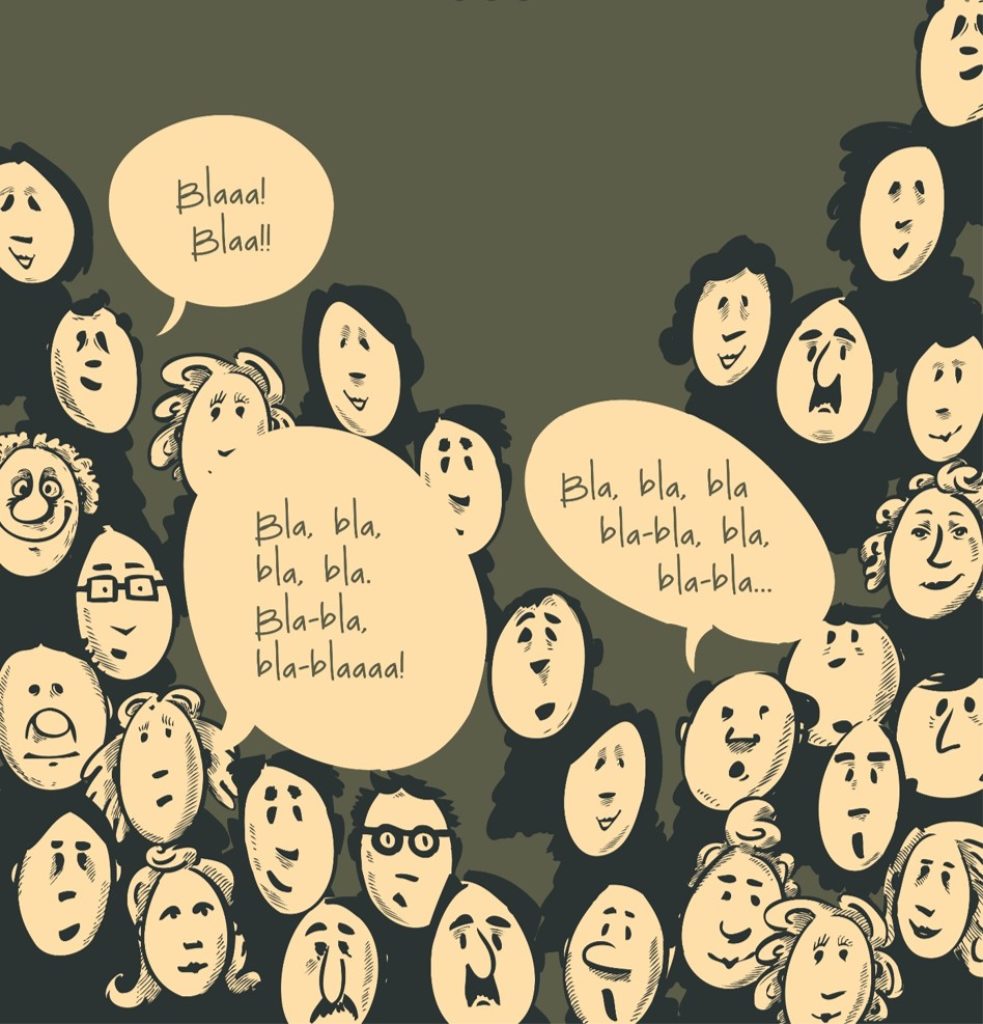
If you’ve had a chance to conduct or observe audience research over the years, the top two complaints about radio are evergreens. In fact, they rarely, if ever, change:
Too many commercials and too much talk
Now, in both cases, respondents cannot exactly articulate precisely what constitutes going these egregious conditions. In other words, how much is too much?
How many commercials are “too many?”
How much banter and chatter is “too much?”
Like the subjective definition of pornography made famous by Supreme Court Justice Potter Stewart:
“I know it when I see it.”
And when it comes to radio commercials and DJ talk, most people will tell you they know it when they hear it.
Both problems have been exacerbated by PPM. That’s because the meters catch us in the act. With the diary methodology, getting painted with the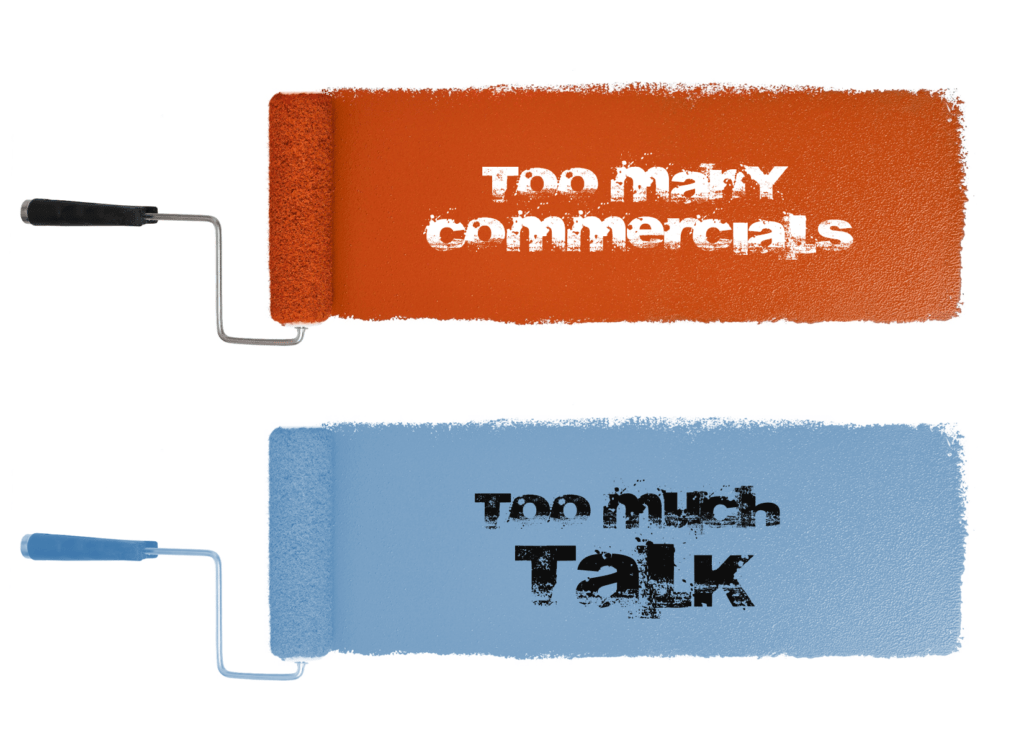 “commercials” or the “talk” brushes tend to be brand image problem (yes, reinforced by bad behavior).
“commercials” or the “talk” brushes tend to be brand image problem (yes, reinforced by bad behavior).
Meters, however, are less forgiving. On PPM’s “EKGs” we can physically see what happens during commercial breaks. And we can also learn what happens when bits and talk breaks run long.
But what is it about talk that elicits that universal responses of “They go too far,” “They don’t know when to stop,” “They beat some topics into the ground?” We hear these exact same complaints in focus groups, often uttered word for word by respondents of varying backgrounds, ages, and musical tastes.
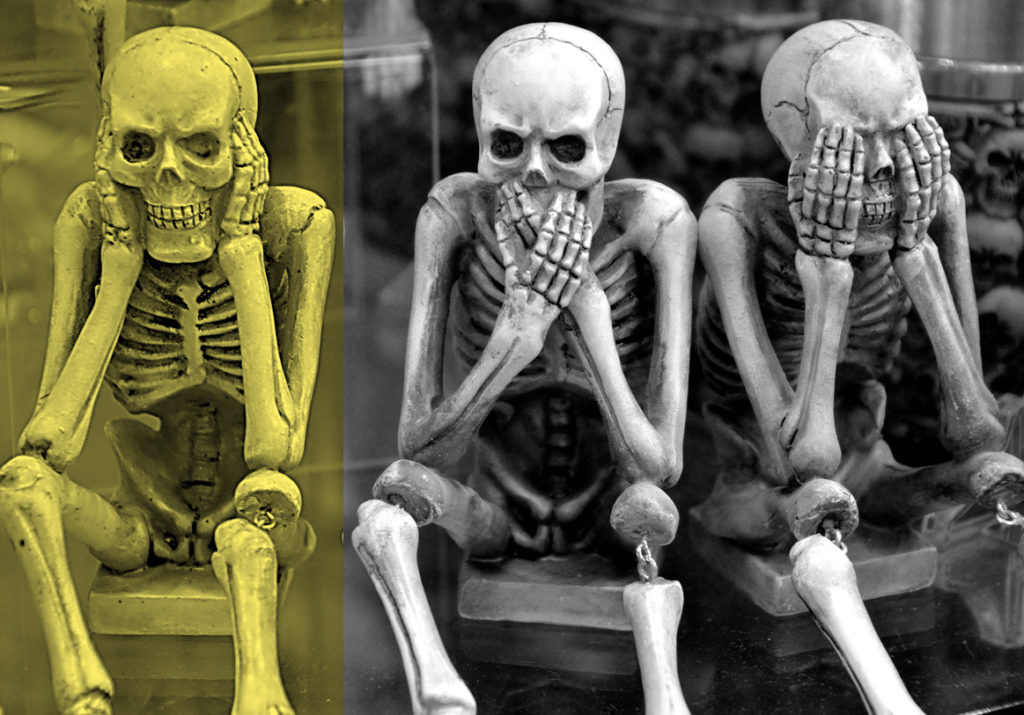 So, is there anything we can learn about the perils of talking too much?
So, is there anything we can learn about the perils of talking too much?
That became the mission of three university teams – from Harvard, Wharton, and the University of Virginia. The big finding?
Conversations between people tend to run on too long.
Covered in Phys.Org by writer Bob Yirka, the researchers tried a couple of different methods – recall and an actual conversation. Yes, kind of like diaries and PPM.
Using the Amazon Mechanical Turk platform, more than 800 volunteers were queried about their most recent conversation. Overall, about two out of three wanted or expected that tête-à-tête to reach a conclusion before it actually did.
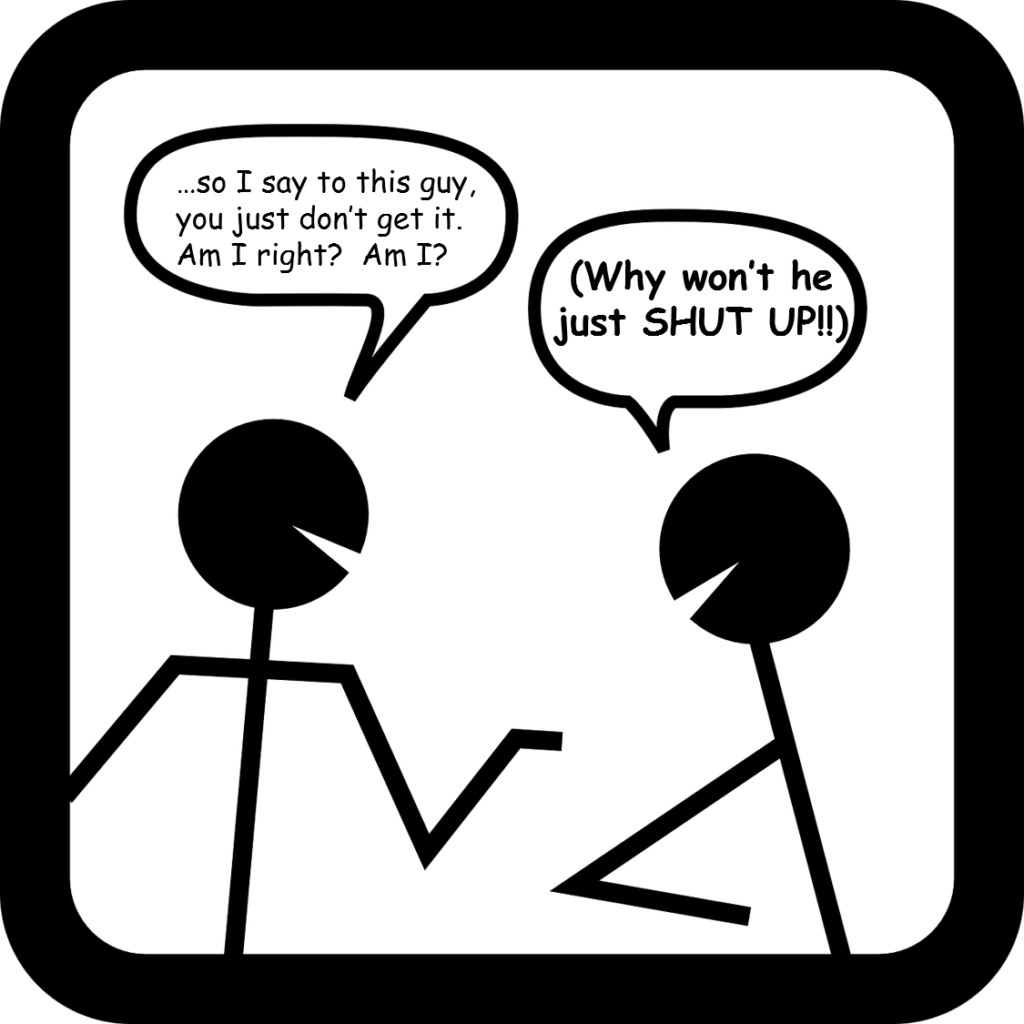 Undaunted, the researchers created an actual experiment. A sample of 252 U.S. students were placed in a one-on-one situation with another student.
Undaunted, the researchers created an actual experiment. A sample of 252 U.S. students were placed in a one-on-one situation with another student.
The only requirement of the conversation was that it last no less than one minute, and no longer than 45 minutes.
An astonishing 2% of these volunteers said their conversations lasted a suitable length of time for each set of participants. And approximately, six in ten wished their one-on-one had ended before they actually did.
Now before we draw too many conclusions based on this research, there appears to be some key differences between these conversations and listening to the radio.
First, these were all students. They don’t represent a full-scale population of Americans, based on age or educational background.
 Second, it appears the study was conducted pre-COVID. (I did my best to check the source, and couldn’t nail down the survey dates). If my suspicion is correct, feelings about conversations and their desirability may be perceived very differently today than they were back in 2019.
Second, it appears the study was conducted pre-COVID. (I did my best to check the source, and couldn’t nail down the survey dates). If my suspicion is correct, feelings about conversations and their desirability may be perceived very differently today than they were back in 2019.
Third, a conversation between two strangers is a very different experience than listening to a familiar music or talk host, or an ensemble team.
We listen to – or listen in on – a radio show or host convo or monologue. We don’t interact with it – unless you consider yelling at the radio, “Shut up and play a record!” a form of discourse.
And the really great talent can take a prepared bit – one that has a point, a purpose, a direction, a punch line – and make it sound like a natural conversation that captures our interest.
So, can we learn anything from this research study?
We do know that most conversations are not *”PPM friendly.”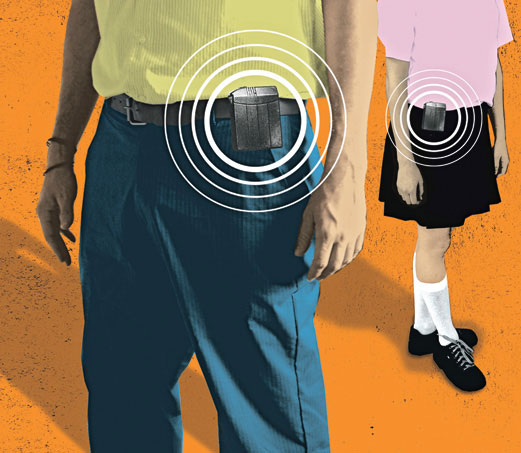
But that’s not a revelation. A conversation isn’t structured or prepped. Unlike strong, funny, emotional, or controversial radio bits, they don’t have a beginning, a middle, and an end. They just happen, often without payoffs.
We don’t have a level of comparison – that is, would the tolerance for conversation with others have been higher a decade ago? What about 20 years ago?
There’s data to support the idea that technology has decreased our attention spans. Most of us pay less attention, don’t focus as well as we once did, and have dwindling patience for events and experiences we’re not enjoying.
 The “skip” function has become the modern day version of punching presets buttons on a car radio. While I have no metrics to prove it, I’m pretty sure my most common voice command is “Alexa, OFF.”
The “skip” function has become the modern day version of punching presets buttons on a car radio. While I have no metrics to prove it, I’m pretty sure my most common voice command is “Alexa, OFF.”
For personalities on the airwaves, respecting these “gviens” is the only logical action step. By spending time with our radio stations, consumers are giving us their most important resource – their time. It is essential that radio gives them something in return.
But to handcuff personalities to hit arbitrary talk boundaries is to concede that most talk is a turnoff. And we know that many of the most successful, highly rated hosts who millions have made part of their daily routines talk the most.
Harkening back to yesterday’s blog post about station uniqueness, talk on the radio – in the form of companionship, humor, mood elevation, and just to keep us sane – is a big part of what differentiates radio from other media.
By their very nature, conversations with strangers are not always especially interesting or riveting. Many are downright boring.
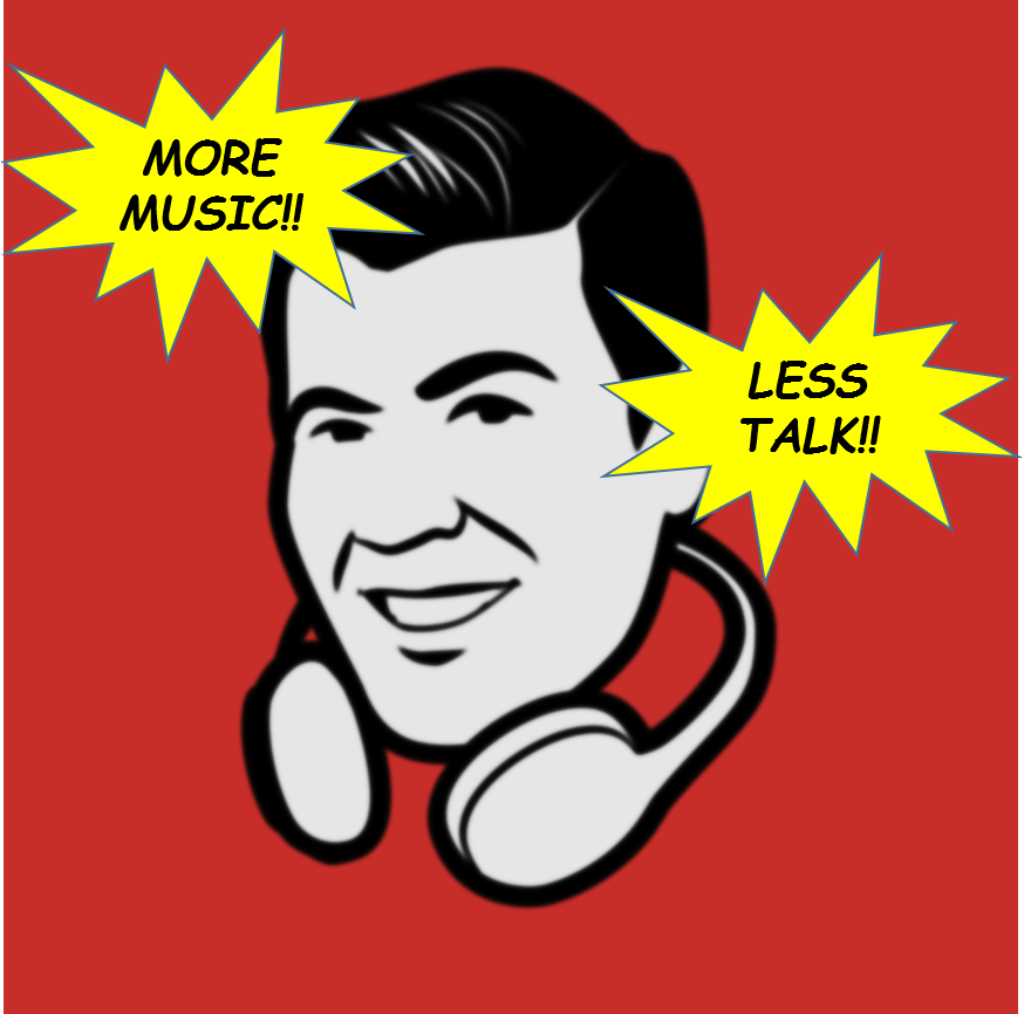 But the one-to-one intimacy that take place between a radio host and someone at home, at work, or in the safety of their car is a unique setting with the ability to create a strong connection.
But the one-to-one intimacy that take place between a radio host and someone at home, at work, or in the safety of their car is a unique setting with the ability to create a strong connection.
“More music – less talk” isn’t a style or a strategy. It’s a policy.
That’s why when we find people with the ability to talk on the radio, we’re tasked with doing everything we can to nurture their talents and give them every opportunity to connect and engage with their audiences.
Talk is cheap.
Entertaining talk may the most valuable radio quality of them all.
* PPM is Nielsen’s Portable People Meter, the ratings currency for the largest 48 markets in the U.S., and also in Canada.
- How Will Radio Fare In The Battle For The Fourth Screen? - April 3, 2025
- Like A Pair Of Old Jeans - April 2, 2025
- What’s Fair Is Fair - April 1, 2025




Bullseye again, Fred. I would analogise talk to a musical instrument. Much as I’d love to play guitar as well as Eric Clapton does, if you heard me trying you’d shout, “Too much inept strumming!” Lots of people behind the mic think they’re the verbal equivalent of Eric–but they’re not. I can count on the fingers of one hand the radio talents I’ve truly enjoyed listening to in a life full of radio. For everyone else, even the legal ID is pushing their luck.
Why do you think I’m a consultant and not a successful morning guy?
The greats make it sound easy. But it’s not.
Thanks for the spot-on comment.
The biggest issue I have with talk is be intelligent! Its really bad when I know more about the subject then the radio host. Its worst when they are talk show hosts. We can probably count on one hand the number of on air personalities that show prep. People become good at a craft when they practice and prepare.
Most cannot get away with winging it. And you point out, Angie, the audience is doing fact checking, too. As my friend Alan Burns once told me, TSP = TSL – time spent prepping = time spent listening.
You state the “skip” function has become the modern day version of punching presets. I would also add that the internet has made a nation/world of scrollers. We browse—till aroused.
Good one! Thanks for chiming in, Marty.
I had an e-mail conversation with Mike McVay the other day on the question of properly “formatting” talk into a stopset so as to minimize the “too many commercials” reaction. We pretty much agreed that Casey Kasem was the model to emulate. His teases into breaks on American Top 40 were always compelling … although he was scripted then, it was the same way he had been doing his shows as a top-40 DJ for several years by then. (Mike thinks — and I agree — that was a big part of why he was chosen as AT40’s host.)
Taking that a step further in light of your article, Fred, I would think that a good teaser into a stop would set up the audience’s expectations and a good air talent could get away with a little more talk than usual out of the stop, if it was the subject of the tease.
But of course, it all comes down to something we’ve all preached for years now: SHOW PREP, SHOW PREP, SHOW PREP!
KM, thanks for this. McVay knows this turf well.
And I’d venture a guess no one ever complained that Casey talked too much. He was all about word economy, great storytelling, and compelling content. And yes, AT40 was one of the best-prepped showed in radio history.
“Economy of words”. That’s my opinion.
Thanks, Randy.